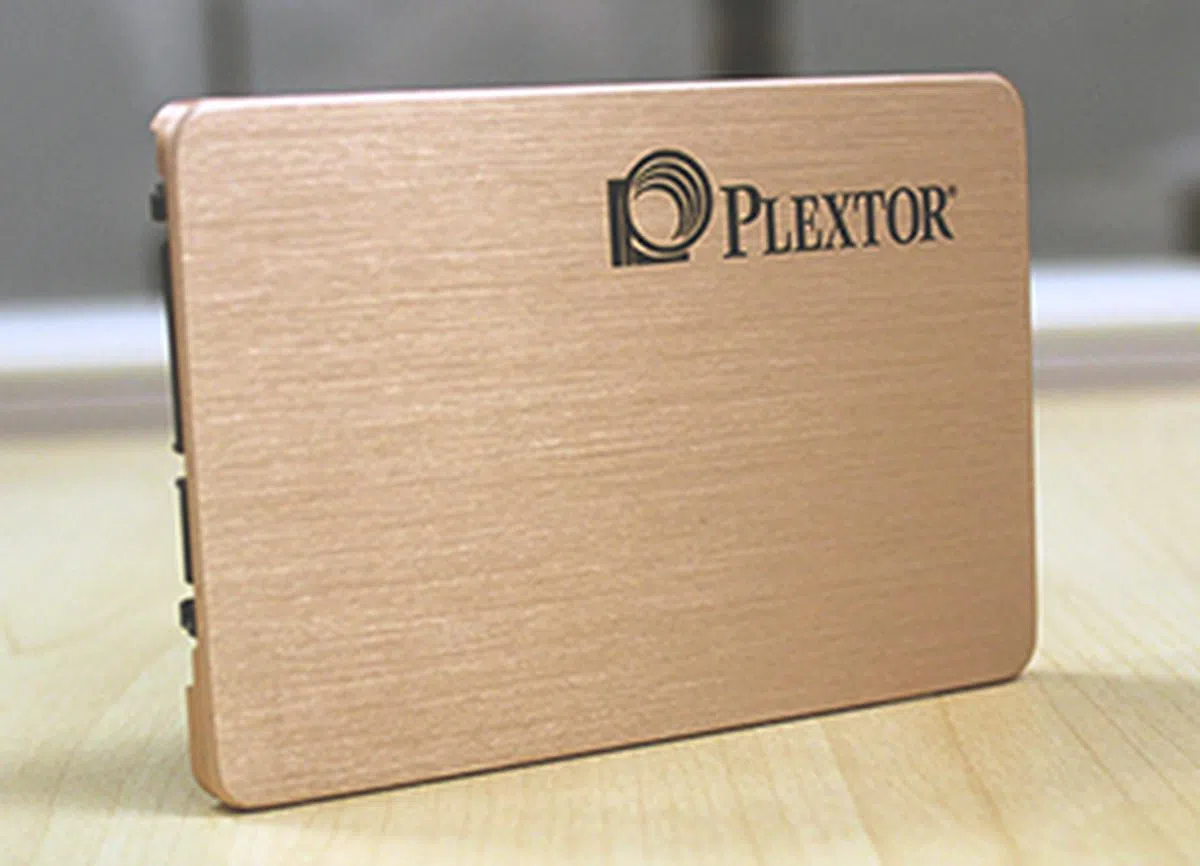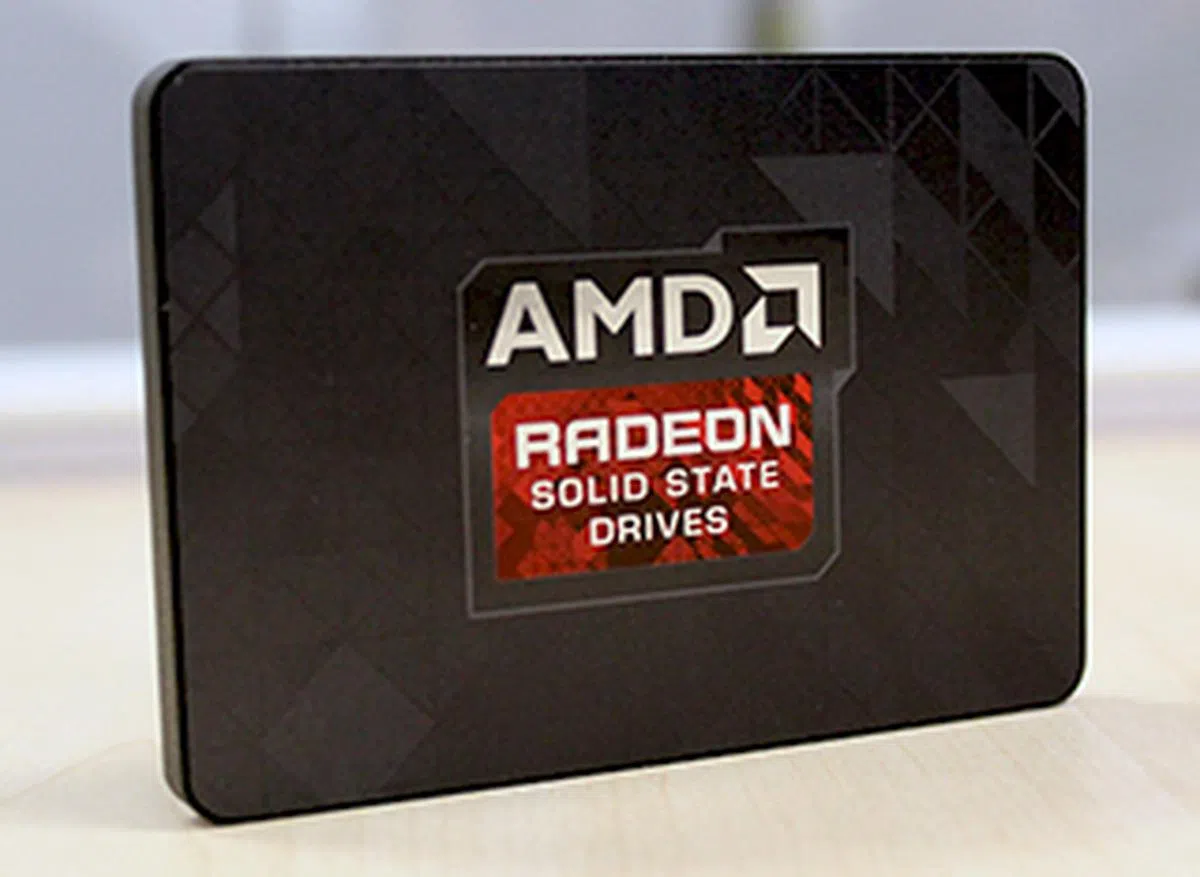AMD Radeon R7 vs. Plextor M6 Pro - Two high-end SSDs challenge for honors
The AMD Radeon R7 and Plextor M6 Pro are two of the latest high-end SSDs to hit the market. We put them through their paces to see if they can challenge other established high-end SSDs, such as the Samsung SSD 840 Pro and OCZ Vector 150.
By Kenny Yeo -
High-end tussle
The good news for consumers right now is that prices of SSDs have never been lower. In the past, a good high-end SSD at the 240/256GB capacity point would set you back around S$300 or even more. Now, prices of such drives have dropped to around S$220 to SS$250. If you are not fussy about performance, entry-level or mainstream drives at this capacity point can be had for even lower, at around S$160 to S$180. So really, at the minimum, there’s no reason for anyone to still be using a spinning hard disk drive as their bootup drive.

Consumers are truly spoiled for choice right now with so many competent SSDs in the market. Today, we pit two of the newest high-end SSDs against each other - the AMD R7 and the Plextor M6 Pro.
Introducing the Radeon R7
One of the reasons why prices have come down so quickly is because of increased competition. Although the market is showing signs of consolidation, competition from the main players - Samsung, Crucial/Micron, SanDisk, and now OCZ/Toshiba - has been intensifying. Obviously, this is good news for all consumers and we are certainly not complaining.
The newest player to this market is AMD. Since April this year, there were rumors that AMD was going to partner Toshiba to produce SSDs. And this was finally confirmed last month when AMD announced its new R7 SSDs, which are indeed produced in collaboration with OCZ/Toshiba.
The move marked AMD’s continual efforts to make it easier for consumers to assemble AMD-powered systems. Apart from its processors, APUs and graphics cards, in 2011, AMD also announced its own Radeon-branded memory modules. With the introduction of the R7, AMD Radeon now covers processors, APUs, memory, graphics and storage, making it easy for novices to pick and build their own systems.
As mentioned in our news piece, the AMD Radeon R7 SSD will be an exclusive partnership with OCZ/Toshiba. The partnership makes sense because along with Samsung, Crucial/Micron and SanDisk, OCZ/Toshiba is one of the few SSD manufacturers to have access to its own NAND. This is a crucial aspect to staying competitive in the SSD business.

This is how the AMD R7 will fit into OCZ's line-up.
As for the Radeon R7, the drive actually slots in perfectly between OCZ’s existing Vertex 460 and Vector 150 drives, which makes it a mid to high-end SSD. AMD mentions that it will be targeted squarely at gamers and it will use OCZ’s own in-house developed Barefoot 3 controller. It will also be the first high-end SSD to utilize Toshiba’s new A19nm MLC NAND.

Flip the AMD drive around and you will see OCZ labels all over.
If you have handled OCZ drives in the past, the feel of the R7 will be instantly familiar. The chassis has the same solid and hefty feel of OCZ drives. In fact, AMD makes no bones about their collaboration with OCZ/Toshiba, because if you turn the drive around, you will see labels by OCZ. The Radeon R7 will also be packaged similar to OCZ drives and will come with a 3.5-inch hard disk bay adapter and Acronis TrueImage cloning utility.
Plextor M6 Pro

One the left, the older Plextor M5 Pro Xtreme; on the right, the newer Plextor M6 Pro. The rose gold-colored chassis is unusual and quite funky looking in our books.
Earlier in May, we reviewed the first drive from Plextor’s new M6 series - the entry-level M6S - and found it to be an attractive option for mainstream users and bargain hunters. It offered decent performance and a long five-year warranty, and prices have been steadily declining since then, making it even more attractive today.
However, this also led us to wonder when will Plextor be dropping its flagship M6 Pro drive. Our answers were answered a month later at Computex 2014, when it unveiled its M6 Pro drive.
The new Plextor M6 Pro uses the tried-and-test Marvell 88SS9187 controller that is used in other high-end drives such as the SanDisk Extreme II and the drive it replaces, the Plextor M5 Pro Xtreme. It also uses the same new Toshiba A19nm MLC NAND as the AMD R7. Interestingly, it looks almost identical to the M5 Pro Xtreme, save for its funky rose gold-colored chassis.
But controller and memory aside, what is arguably most interesting about the Plextor M6 Pro is its new PlexTurbo caching technology. Like Samsung’s RAPID Mode caching technology, PlexTurbo will make use of system memory and the SSD’s DRAM to boost speeds and offer levels of performance that will rival PCIe-based SSD drives. The technology looks promising and demo systems at Computex 2014 showed the new M6 Pro with PlexTurbo enabled hitting sequential read and write speeds that were far in excess of 2GB/s and random read and write speeds that were nearly 1GB/s.
Test Setup
The two SSDs will be tested on our dedicated storage testbed:
- Intel Core i5-2500K (3.3GHz)
- ASUS P8Z77 Pro Thunderbolt (Intel Z77 chipset)
- 2 x 2GB DDR3-1600 memory
- MSI GeForce 8600 GTS
- Windows 7
We have recently revised our benchmarks, ditching older benchmarks such as HD Tune and also including an all new timing test to better evaluate the drive’s real world performance. The list of benchmarks used are as follows:
- AS-SSD benchmark 1.7.4739
- CrystalDiskMark 3.0.1
- PCMark 7 (Storage suite)
- Iometer (version 2006.07.27)
- Timing Tests (Cold start, Reboot, Apps Launching)
We will be pitting the new AMD Radeon R7 and Plextor M6 Pro against some of the quickest drives in the business. For the R7, it will be interesting to see how it matches up against the Vertex 460 and the flagship Vector 150. As for the Plextor M6 Pro, it will be intriguing to see how much Plextor can improve it over the M5 Pro Xtreme, which is still among one of the fastest SSDs in the market today. The M6 Pro will be tested as is without enabling PlexTurbo, which we will look into in a separate article in the future.
Here is the list of drives tested:
- AMD Radeon R7
- Plextor M6 Pro
- OCZ Vertex 460
- OCZ Vector 150
- Plextor M5 Pro Xtreme
- Samsung SSD 850 Pro
- Samsung SSD 840 Pro
Timing tests
Recently added to our evaluation of SSDs is how they perform in real-world everyday situations, namely booting up from a cold start, reboot and launching applications. As for the applications used, we made the drives launch 11 applications from the Adobe CS6 suite of utilities simultaneously; they include resource-intensive applications such as Photoshop, InDesign, Dreamweaver, and Premiere Pro, amongst others. As a point of reference, a 7200rpm mechanical hard disk would take over 5 minutes to open all the applications.
The older Plextor M5 Pro Xtreme recorded some of the quickest times in our timing tests and the new Plextor M6 Pro builds upon this by being even quicker. Timings from a cold start was particularly impressive at just 24.2 seconds. As for the AMD R7, we can see that its recorded timings came in nicely between the OCZ Vector 150 and Vertex 460. Between the AMD R7 and Plextor M6 Pro, it is clear that the latter is the faster drive for this test.

PCMark 7 results
PCMark 7 is a benchmarking suite from FutureMark that evaluates the performance of Windows 7 machines. It tests a wide range workloads and aspects of the system ranging from computation, image and video manipulation and storage. We’ll be looking solely at the storage test here.
The new Plextor M6 Pro continued its strong start by racking up an impressive 5,556 points in PCMark 7 - making it the second highest scoring drive next to the Samsung SSD 840 Pro. The AMD R7, on the other hand, only managed 5,280 - about 5% lower. Curiously, it also scored lower than the OCZ Vertex 460, which we were not expecting. Looking at the breakdown of the drives performance, we can see that the AMD R7 suffered poor speeds when it came to the “Starting Applications” scenario.


CrystalDiskMark 3.0.1 Results
CrystalDiskMark is an easy-to-run and quick utility to use to gauge a drive’s performance. It measures sequential read and write performance and random read and write speeds of random 4KB, 4KB (queue depth 32) and 512KB data.
The Plextor M6 Pro’s numbers were pretty solid on CrystalDiskMark, but we noticed that write performance was slightly poorer. This was most evident on the 4K workload where it was the only drive to manage under 100MB/s for write operations. Nevertheless, performance is generally better than the Plextor M5 Pro Xtreme, but it is still some ways off from challenging the OCZ Vector 150 and Samsung SSD 840 Pro, which are the absolute kings on this benchmark.
The AMD R7’s performance was some ways off the mark as we had expected it to outperform the Vertex 460, which it didn’t. It was slower than the Vertex 460 in almost every workload, except on the 4K, 32 queue-depth workload. That said, its write performance was generally better than the Plextor M6 Pro.




AS SSD 1.7.4739 results
AS SSD is a benchmark that uses non-compressible and completely random data. What this means is that the drives using the SandForce SF-2281 controller cannot compress the data first, which takes away one of the strong advantages of this controller. Therefore, this is a useful benchmark because drives that use the SF-2281 controller or similar won't gain an upper hand.
Both drives had a good showing on AS SSD, but the AMD R7’s performance was still somewhat erratic and off our expectations. Its showing on the Copy Benchmark was solid, racking up some of the highest copying speeds we have ever seen. But in some other instances, it was challenged by the Vertex 460.
On the other hand, the Plextor M6 Pro offered improved performance over the older M5 Pro Xtreme, but write speeds were still off the pace when compared to the competition. That said, read speeds were pretty impressive and easily amongst the fastest. Overall, performance between the AMD R7 and Plextor M6 Pro was close, but the AMD drive just about nicks it in this benchmark.




Iometer results (Part 1)
Lastly, we put the drives through the rigorous grind of Iometer, with different workloads and I/O queue depths. We have chosen to show results from a queue depth of 1 to 5 as this better represents the workloads a typical consumer might face.
OCZ drives always suffered from poor Iometer performance, and unfortunately the AMD R7 is no different. Looking at the graphs, we can see that its performance mostly mirrors that of the OCZ Vertex 460 and even the OCZ Vector 150, which means to say it is not great.
Plextor drives, on the other hand, are the exact opposite and their drives have traditionally fared well on this benchmark. Hence, we were not surprised to see that the Plextor M6 Pro had a pretty showing on Iometer. Looking at the graphs, the M6 Pro’s plots closely mirrors that of the older M5 Pro Xtreme; it was strong on just about every workload except for the 64k streaming writes.




Iometer results (Part 2)
Finally, we look at the I/O response times for the workloads reported on the previous page. As the graphs below show, the AMD R7’s response times were one of the highest, resulting in its poor showing on the previous page. On the flip side, the Plextor M6 Pro was one of the more responsive drives in our tests.




Priced to win
AMD’s move into the SSD space is a curious one, considering how tightly contested this market is. It is increasingly hard to stay competitive in this scene for brands without their own NAND production facilities. That said, it is probably necessary for AMD from a branding perspective as it seeks to make things simpler for consumers who want to assemble full systems. Having AMD CPUs and APUs along with AMD-branded memory and storage should make it easier for consumers to pick and choose parts. The decision to collaborate with OCZ/Toshiba is also a pretty good move on their part as the latter is one of the few SSD manufacturers to boast of their own NAND foundry and also their own controller.
The AMD Radeon R7 is an interesting drive as it purports to fill the performance gap between the Vertex 460 and Vector 150. This makes sense from both performance and pricing standpoints as the Vector 150 is both faster and significantly more costly than the Vertex 460. However, as our tests have shown, it doesn’t quite manage to do that. Performance on the whole is quite erratic, as far as AMD’s purported positioning is concerned. We found that its performance was either quite similar to the Vertex 460 or in some cases poorer. That is not to say that its performance is poor - the Vertex 460 is a capable performer - but it just falls short of our expectations. Furthermore, the two even come with exactly the same accessories - 3.5-inch installation bracket and cloning utility. This means that the only other difference between the two is the AMD R7’s slightly longer warranty - 4 years vs. 3 years. Hence, if you look at the pricing of the two - the AMD Radeon R7 is S$245 while the OCZ Vertex 460 is S$199 - what you are essentially forking out an extra S$46 for is an additional year’s worth of warranty. We are not quite sure that makes any sense especially if you consider what else the competition has to offer.

The Plextor is arguably the best bang for buck high-end drive in the market right now. On the other hand, the AMD R7 does not perform up to our expectations.
The competition in this case is the Plextor M6 Pro. Let’s begin with what’s good about the drive. Performance is generally improved upon the older M5 Pro Xtreme, but not by a significant amount. Users who are using the M5 Pro Xtreme need not rush out and upgrade their drives just yet. This is not entirely surprising if you consider that both drives are still using the same controller - the Marvell 88SS9187 in case you've forgotten - and only differ in the memory being used.
The M6 Pro’s performance is good, but write performance is a little poor when compared to the other drives in the high-end segment. Additionally, despite being slightly faster, it is still outclassed by the Samsung SSD 840 Pro, which has already been superseded by the newer and faster SSD 850 Pro. Fortunately, Plextor is not blind to this fact and has priced its new M6 Pro accordingly. In fact, at S$220, we think it is possibly the best bang for buck SSD in the high-end segment, because good performance aside, it comes with just about all the accessories you need and it's backed by a 5-year warranty. Furthermore, these performance numbers were obtained without enabling PlexTurbo, which we are confident will improve performance considerably (look out for this in a later article).
So at the end of the day, between the AMD Radeon R7 and Plextor M6 Pro, the latter is the obvious choice. Although the M6 Pro might have slightly poorer write performance, its overall performance is still decent and competitive, and it comes with good accessories, sufficiently long warranty and perhaps most important of all, a very attractive price.
Our articles may contain affiliate links. If you buy through these links, we may earn a small commission.



